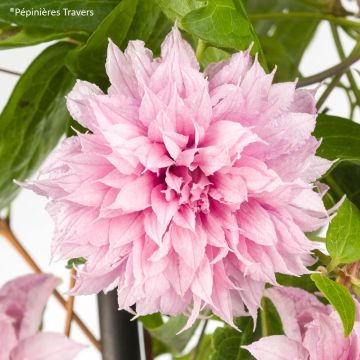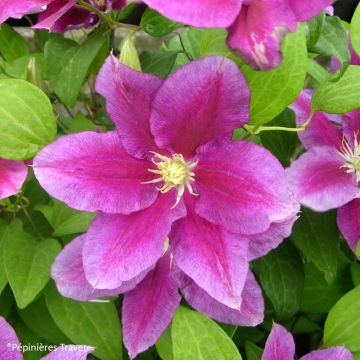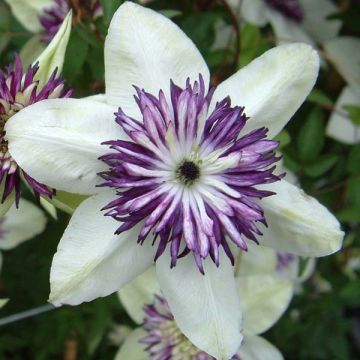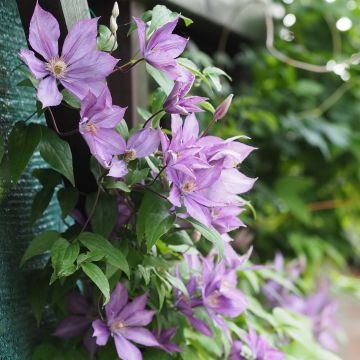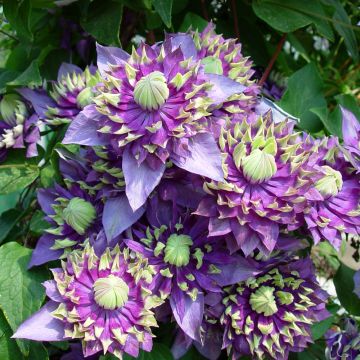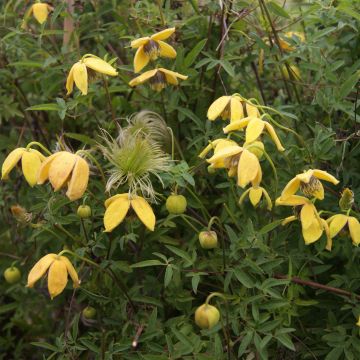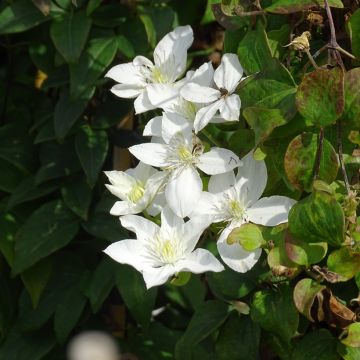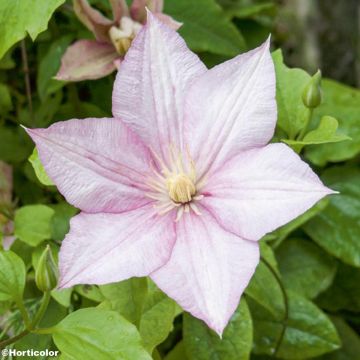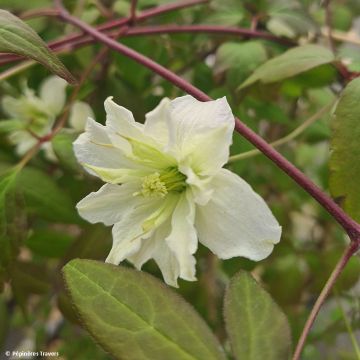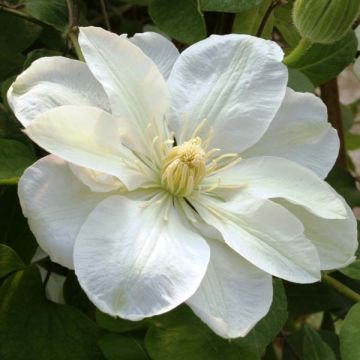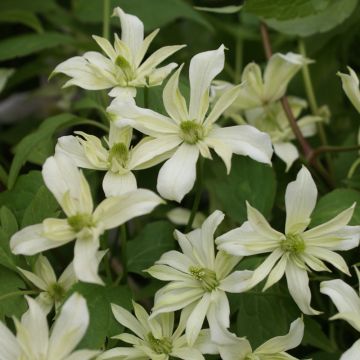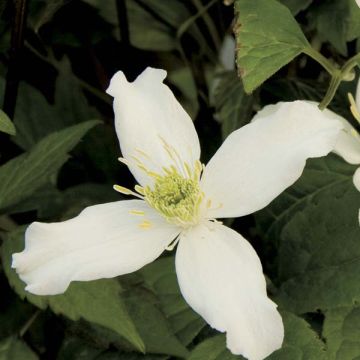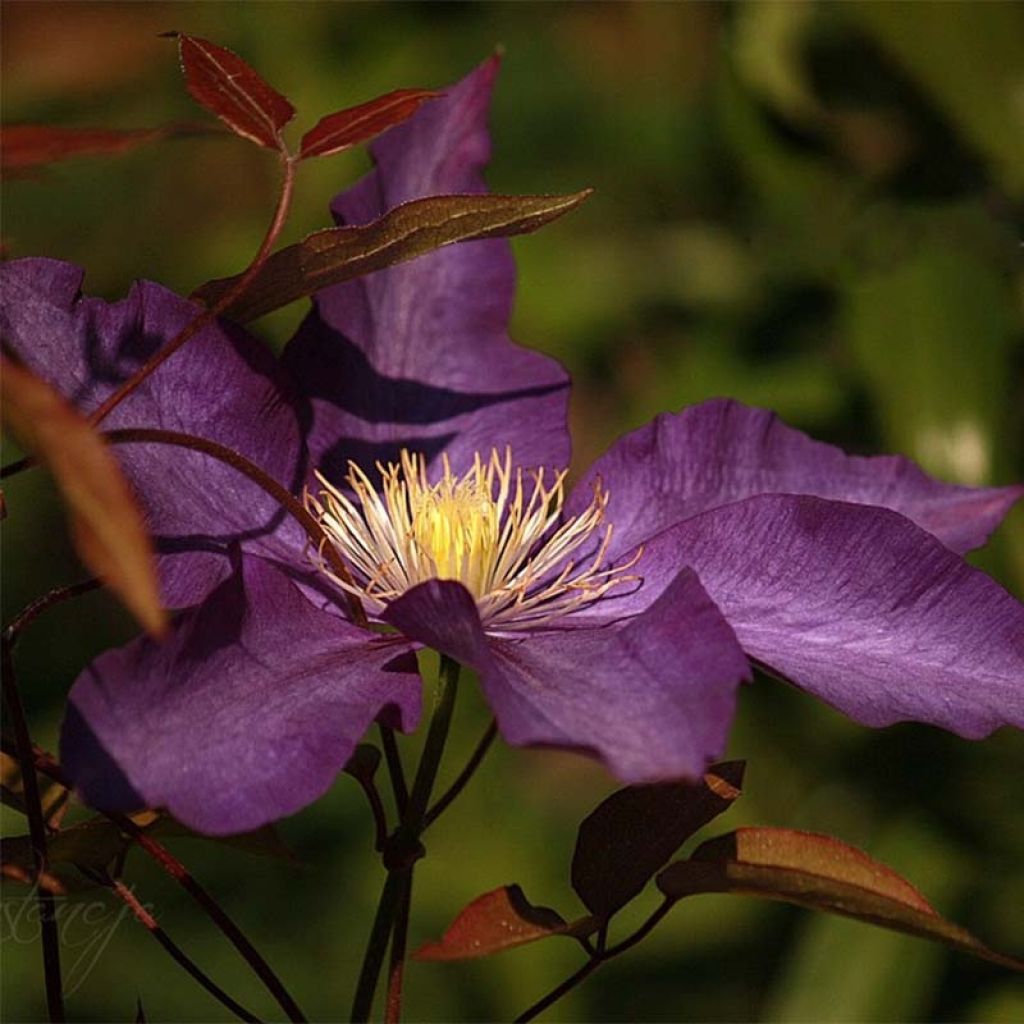

Clematis Gipsy Queen
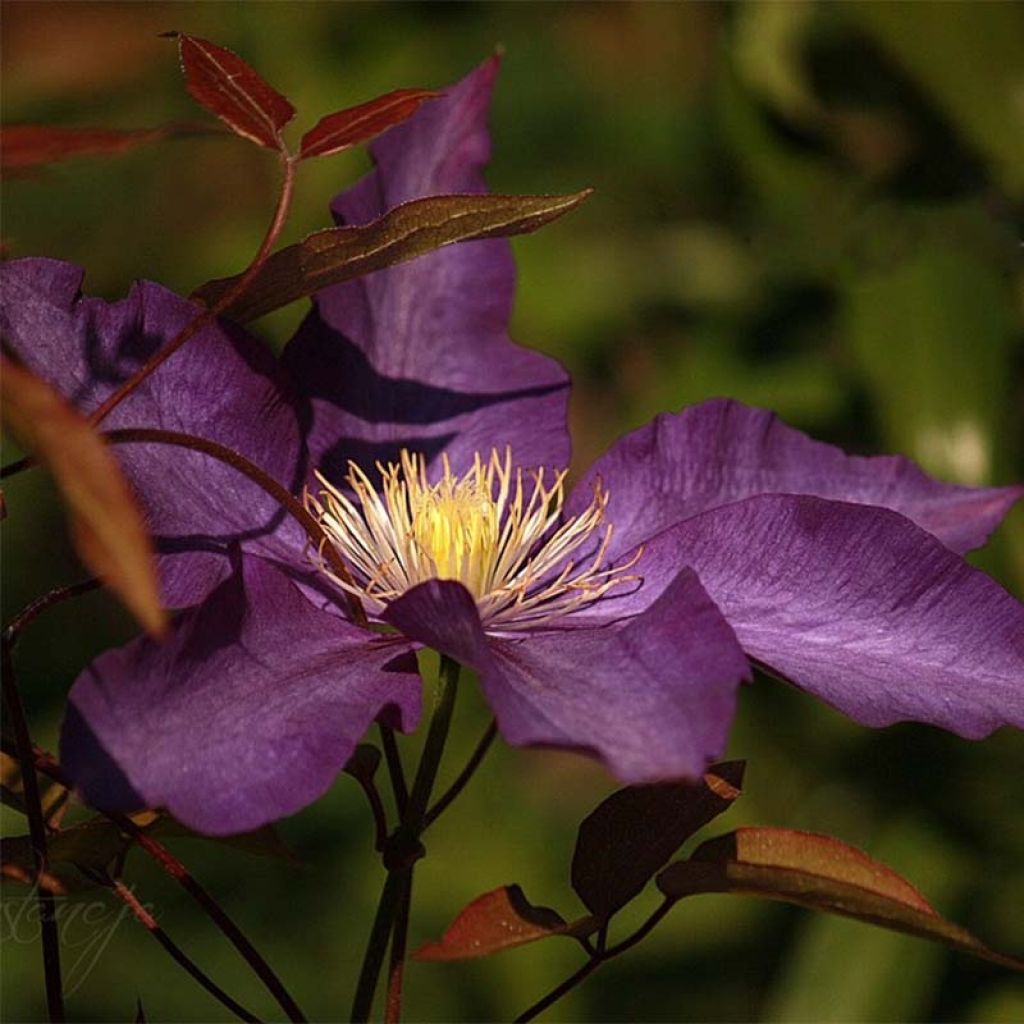

Clematis Gipsy Queen
Clematis Gipsy Queen
Clematis Gipsy Queen
No text to translate.
Muriel J, 19/05/2024
This item cannot be shipped to the selected country
Delivery charge from €5.90
More information
Schedule delivery date,
and select date in basket
This plant carries a 6 months recovery warranty
More information
We guarantee the quality of our plants for a full growing cycle, and will replace at our expense any plant that fails to recover under normal climatic and planting conditions.
From €5.90 for pickup delivery and €6.90 for home delivery
Express home delivery from €8.90.

Does this plant fit my garden?
Set up your Plantfit profile →
Description
Clematis 'Gipsy Queen' is a remarkable variety known for its vigour and late flowering. This climbing perennial develops fine voluble stems that can reach up to 3m (10ft) long and wrap themselves around any support. It bears charming bright green foliage, divided into ovate and pointed leaflets. It blooms abundantly from July to September, with star-shaped flowers that open in intense red before turning deep violet, marked with dark red medians and anthers. Use this variety to enhance a brick wall and bring out the depth of its flower colours. Perfectly hardy, this queen of climbers requires well-drained, rich soil that stays moist in summer. It is happy in full sun or partial shade. It does not tolerate stagnant moisture in heavy soils during winter.
The genus Clematis belongs to the Ranunculaceae family. Clematis 'Gipsy Queen' is an old English horticultural variety, obtained in 1877 by Cripps & Son. It has received the RHS Award Of Garden Merit.
It is a woody climbing perennial with short stems that will not exceed 3m (10ft) in height and has a spread of 1.5m (5ft). The deciduous leaves fall in winter. They are bright green and composed of 3 ovate to lanceolate leaflets, measuring 3 to 7cm (1 to 3in) long and 1.5 to 5cm (1 to 2in) wide, with relatively prominent veins. The rounded, single flowers are composed of a minimum of 6 oblong, oval to rounded, overlapping and pointed tepals. They can reach a width of 12 to 14cm (5 to 6in) in diameter. The plant produces semi-double flowers in spring and single flowers in late summer, in a vibrant shade of red before turning deep purple. The stamens are dark red. The colour of the flowers tends to fade at full bloom, especially when the plant is grown in a very sunny location. This clematis clings to its support or host plant using voluble stems with petioles transformed into tendrils.
Plant your clematis alongside climbing roses to extend the flowering period on walls and pergolas until the end of summer. This is a diverse genus, with flowers in all colours, shapes, and sizes. Take advantage of their easy cultivation to give your garden a romantic and bohemian touch. To protect the base of the plant from excessive heat and drying out, plant your clematis in the shade of a ground cover perennial or a bush. Thanks to its medium to small size, 'Gipsy Queen' will easily find a place in a small garden and will thrive in a pot on a balcony or next to a door, embracing a small bamboo structure to welcome visitors with its colourful flowers. It is a good companion for climbing roses, especially those with white, pink, or apricot flowers, blooming at a different time and in complementary dark tones.
Report an error about the product description
Clematis Gipsy Queen in pictures


Plant habit
Flowering
Foliage
Botanical data
Clematis
Gipsy Queen
Ranunculaceae
Cultivar or hybrid
Other Clematis Florida
Planting and care
Choose a clear, non-scorching sunny exposure, or partial shade. In a sunny exposure, shade the base of your plant with a ground cover plant or a perennial geranium. Clematis like to have cool feet. Work the soil to a depth of 20cm (8in), and lighten it with good compost and coarse sand. Position the plant and cover the root ball with 3cm (1in) of soil. Water generously and regularly during the first few weeks. Do not overwater as this can lead to the development of a fungus at the collar.
Clematis cling on their own thanks to their tendrils. To promote their growth, provide them with a trellis support or let them dress the trunk of a tree by placing a wire mesh against the trunk for the clematis to climb on. Clematis also like to grow freely on neighbouring plants.
In early spring, prune the previous year's stems to about 15 to 20cm (6 to 8in) from the ground, above a pair of large buds.
It is easy to grow in a large pot, filled with good horticultural compost.
Planting period
Intended location
Care
-
, onOrder confirmed
Reply from on Promesse de fleurs
Clematis
Haven't found what you were looking for?
Hardiness is the lowest winter temperature a plant can endure without suffering serious damage or even dying. However, hardiness is affected by location (a sheltered area, such as a patio), protection (winter cover) and soil type (hardiness is improved by well-drained soil).

Photo Sharing Terms & Conditions
In order to encourage gardeners to interact and share their experiences, Promesse de fleurs offers various media enabling content to be uploaded onto its Site - in particular via the ‘Photo sharing’ module.
The User agrees to refrain from:
- Posting any content that is illegal, prejudicial, insulting, racist, inciteful to hatred, revisionist, contrary to public decency, that infringes on privacy or on the privacy rights of third parties, in particular the publicity rights of persons and goods, intellectual property rights, or the right to privacy.
- Submitting content on behalf of a third party;
- Impersonate the identity of a third party and/or publish any personal information about a third party;
In general, the User undertakes to refrain from any unethical behaviour.
All Content (in particular text, comments, files, images, photos, videos, creative works, etc.), which may be subject to property or intellectual property rights, image or other private rights, shall remain the property of the User, subject to the limited rights granted by the terms of the licence granted by Promesse de fleurs as stated below. Users are at liberty to publish or not to publish such Content on the Site, notably via the ‘Photo Sharing’ facility, and accept that this Content shall be made public and freely accessible, notably on the Internet.
Users further acknowledge, undertake to have ,and guarantee that they hold all necessary rights and permissions to publish such material on the Site, in particular with regard to the legislation in force pertaining to any privacy, property, intellectual property, image, or contractual rights, or rights of any other nature. By publishing such Content on the Site, Users acknowledge accepting full liability as publishers of the Content within the meaning of the law, and grant Promesse de fleurs, free of charge, an inclusive, worldwide licence for the said Content for the entire duration of its publication, including all reproduction, representation, up/downloading, displaying, performing, transmission, and storage rights.
Users also grant permission for their name to be linked to the Content and accept that this link may not always be made available.
By engaging in posting material, Users consent to their Content becoming automatically accessible on the Internet, in particular on other sites and/or blogs and/or web pages of the Promesse de fleurs site, including in particular social pages and the Promesse de fleurs catalogue.
Users may secure the removal of entrusted content free of charge by issuing a simple request via our contact form.
The flowering period indicated on our website applies to countries and regions located in USDA zone 8 (France, the United Kingdom, Ireland, the Netherlands, etc.)
It will vary according to where you live:
- In zones 9 to 10 (Italy, Spain, Greece, etc.), flowering will occur about 2 to 4 weeks earlier.
- In zones 6 to 7 (Germany, Poland, Slovenia, and lower mountainous regions), flowering will be delayed by 2 to 3 weeks.
- In zone 5 (Central Europe, Scandinavia), blooming will be delayed by 3 to 5 weeks.
In temperate climates, pruning of spring-flowering shrubs (forsythia, spireas, etc.) should be done just after flowering.
Pruning of summer-flowering shrubs (Indian Lilac, Perovskia, etc.) can be done in winter or spring.
In cold regions as well as with frost-sensitive plants, avoid pruning too early when severe frosts may still occur.
The planting period indicated on our website applies to countries and regions located in USDA zone 8 (France, United Kingdom, Ireland, Netherlands).
It will vary according to where you live:
- In Mediterranean zones (Marseille, Madrid, Milan, etc.), autumn and winter are the best planting periods.
- In continental zones (Strasbourg, Munich, Vienna, etc.), delay planting by 2 to 3 weeks in spring and bring it forward by 2 to 4 weeks in autumn.
- In mountainous regions (the Alps, Pyrenees, Carpathians, etc.), it is best to plant in late spring (May-June) or late summer (August-September).
The harvesting period indicated on our website applies to countries and regions in USDA zone 8 (France, England, Ireland, the Netherlands).
In colder areas (Scandinavia, Poland, Austria...) fruit and vegetable harvests are likely to be delayed by 3-4 weeks.
In warmer areas (Italy, Spain, Greece, etc.), harvesting will probably take place earlier, depending on weather conditions.
The sowing periods indicated on our website apply to countries and regions within USDA Zone 8 (France, UK, Ireland, Netherlands).
In colder areas (Scandinavia, Poland, Austria...), delay any outdoor sowing by 3-4 weeks, or sow under glass.
In warmer climes (Italy, Spain, Greece, etc.), bring outdoor sowing forward by a few weeks.

































